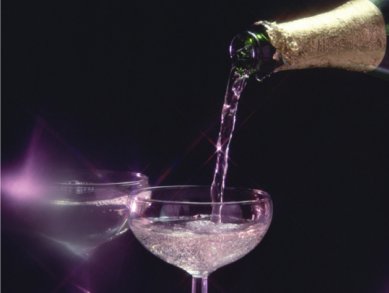In champagnes and sparkling wines, the concentration of dissolved CO2 determines:
- The frequency of bubble formation,
- The growth rate of the bubbles,
- The collapse of bubbles and chemosensory excitation of the oral cavity,
- The nose or bouquet.
Gérard Liger-Belair and co-workers, Université de Reims, France, have used an infrared thermography technique to investigate ways of serving champagne to best preserve the initial CO2 levels.
The traditional champagne-style of serving, with the glass upright, was shown to have a greater rate of CO2 loss than the beer-like method where the glass is initially tilted and the upright position recovered as the champagne is poured.
The greater turbulences from the champagne-like method are responsible for increased diffusion-convection processes that enable CO2 loss. These processes, and therefore CO2 loss, were also shown to increase at higher temperatures.
- On the Losses of Dissolved CO2 during Champagne Serving
G. Liger-Belair, M. Bourget, S. Villaume, P. Jeandet, H. Pron, G. Polidori,
J. Agric. Food Chem. 2010, 58.
DOI: 10.1021/jf101239w




